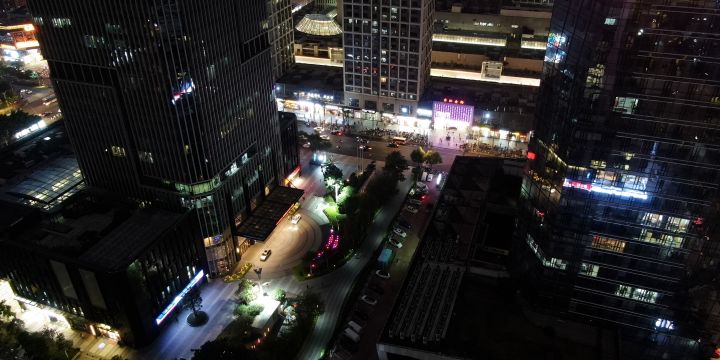Key Takeaways
- Urban living offers access to cultural amenities and conveniences.
- Finding the right apartment involves understanding budget, location, and lifestyle preferences.
- Amenities and community events enhance the urban living experience.
- Green spaces and sustainable living are increasingly important in urban settings.
Benefits of Urban Living
Urban living offers an enticing blend of excitement and convenience. City life can be incredibly stimulating, with bustling street life, access to diverse cultural experiences, and many dining and entertainment options. For those considering a new apartment, an urban setting brings everything from art galleries to bustling markets to your doorstep. The vibrancy and dynamism of city life often spark creativity and encourage exploration, with new trends and innovations emerging rapidly. Urban areas provide entertainment and foster innovation, creating an environment that supports professional and personal growth. Networking opportunities abound, providing invaluable connections across various industries and professions, which can significantly enhance one’s career trajectory. Furthermore, urban living often means access to renowned educational institutions, top healthcare facilities, and other essential services within close reach, enhancing quality of life.
Many urban areas are designed with walkability in mind, allowing residents to easily access amenities such as restaurants, shopping centers, and parks. This urban design encourages an active lifestyle and supports a structured daily routine. Moreover, urban settings often prioritize public infrastructure, providing robust transport systems that make car ownership less of a necessity. This shift towards sustainable living is seen in cities worldwide, with increased efforts to reduce emissions and promote cleaner urban air. Public transportation, cycle routes, and pedestrianized zones are core components of this urban strategy, facilitating healthier living and fostering community interaction. Additionally, walkability often correlates with economic vitality, as pedestrians support local businesses and contribute to the city’s economic dynamism.
Finding Your Ideal Urban Apartment
Choosing the right apartment involves several considerations that go beyond just the rent. Determining a feasible budget is foundational and sets the baseline for exploring various locales and lifestyles. Location is crucial as it determines your daily commute, access to leisure activities, and the general quality of life you can expect. Resources offer invaluable insights into different neighborhoods, allowing renters to compare market trends, pricing, and the unique characteristics of each area. Such data is crucial when deciding where to live, potentially affecting everything from career choices to social opportunities. A well-chosen location can offer a more prosperous life experience by providing proximity to community activities, cultural events, and recreational possibilities.
Your apartment should reflect your lifestyle and personal preferences. A bustling environment with amenities like cafes and theaters may attract those seeking an active social life. On the other hand, tranquility seekers might prioritize proximity to green spaces or quieter neighborhoods. Some might look for affluent cultural quarters with museums and galleries, while others prioritize school districts or safety ratings. Identifying key lifestyle priorities can help narrow options and expedite searching for the perfect living space. This introspective approach ensures your apartment becomes a haven that supports and enhances your daily life. Moreover, consider the potential for future market appreciation or depreciation, which might impact long-term financial plans if home ownership is in your future.
Amenities That Matter
Modern apartment complexes have many amenities designed to enrich the resident experience. Luxury features like fitness centers, swimming pools, and co-working spaces may influence apartment choices significantly. These amenities offer added value, turning an apartment into a lifestyle choice rather than just a living space. Fitness facilities can help you maintain your health without needing an external gym membership. At the same time, co-working spaces provide comfort for remote workers, effectively allowing them to separate work and home environments. Such spaces foster productivity and can often lead to serendipitous professional networking opportunities.
Other desirable amenities include rooftop terraces with panoramic city views or designated entertainment areas where residents can mingle. Such features enhance social interaction among residents, facilitating friendships and strengthening community bonds. Properties catering to pet owners might offer pet-friendly zones or parks, adding convenience for animal lovers. When selecting an apartment, consider which amenities will enhance your daily lifestyle, offering both convenience and opportunities for engagement and recreation within the building. Given the burgeoning focus on wellness and lifestyle integration, many modern amenities include features promoting holistic health, such as meditation gardens and yoga studios.
Building Community in the City
The joy of urban living stems from engaging with diverse individuals. Building a sense of community enriches the living experience and provides a valuable social support network. Participation in organized community events helps meet like-minded individuals and form friendships that can transform urban anonymity into a warm and inclusive environment. Many apartment communities organize events ranging from yoga classes and group workouts to social mixers and workshops, allowing neighbors to connect over shared interests and common goals. These activities provide entertainment and help foster a tight-knit community where individuals feel valued and connected. Involvement in community initiatives or volunteer work can further open doors to long-lasting relationships.
Engaging with local clubs, volunteer groups, and neighborhood gatherings is another way to cement your place within the community. Such involvement enriches your social life and contributes to the well-being of those around you. Engaged residents often find more profound satisfaction in their living arrangements as they become part of a friendly and cooperative network. The sense of community can substantially improve one’s well-being, proving that urban density doesn’t have to equate to isolation. Community-oriented living can offer safety, support, and a platform for collective problem-solving, helping to transform challenges into collaborative opportunities.
Navigating Urban Transportation
Adequate transportation is crucial for urban living, allowing residents to navigate the city efficiently. Cities typically provide diverse transit options, such as subways, buses, cycling routes, and ride-sharing services. Such infrastructure highlights the city’s commitment to sustainable and efficient transport, reducing congestion while improving air quality and resident well-being. Well-planned public transit systems offer convenience and connectivity, linking residential areas to business districts and cultural hubs.
Having a nearby metro stop or a reliable bus line can significantly influence apartment location decisions. Many urban residents also opt for alternative transport methods, such as cycling or electric scooters, which can be economical and eco-friendly, promoting physical fitness and reducing environmental impact. Understanding and utilizing these options can significantly enhance the urban living experience, empowering residents to easily explore diverse parts of the city. Moreover, urban mobility solutions are continuously evolving, with innovations such as electric buses and intelligent traffic management on the horizon, promising further improvements in efficiency and sustainability.
Sustainability in the City
As awareness of environmental challenges continues to grow, sustainability has emerged as a primary focus in the planning of urban apartments. Today’s apartment complexes often boast many green features, from energy-efficient appliances and LED lighting to comprehensive recycling programs and water-saving fixtures. These green initiatives represent a shift towards more conscientious building practices and offer substantial environmental benefits. Transitioning to sustainable living not only addresses climate change but also enhances the quality of living environments for inhabitants, leading to better indoor air quality and lower utility expenses.
Cities worldwide actively pursue methods to lower their collective carbon footprints, incorporating advancements like green building materials, improved waste management, and renewable energy sources. Choosing a sustainable living option aligns with ethical values and can lead to cost savings in utility bills and foster a healthier urban environment. Such considerations are becoming more common among renters, reflecting a broader societal commitment to environmental stewardship and quality living. Green certifications and eco-labels are now integral to many lease agreements, providing renters with clear indicators of commitment to sustainability.
Accessing Urban Green Spaces
Amidst the urban sprawl, green spaces serve as essential sanctuaries, offering a break from the city’s fast-paced life. Parks, community gardens, and waterfronts provide a respite that supports mental well-being, reduces stress, and fosters engagement with nature. Regular interaction with greenery boosts mood and enhances overall health, making it a priority for urban planners and residents. Such spaces are not just nice; they are integral to public health, offering scalable solutions to physical and mental wellness challenges in urban areas.
Cities such as New York and San Francisco have dedicated efforts to expanding green spaces and integrating nature into the urban fabric. These initiatives enhance visual and environmental quality and provide ample space for outdoor recreation, social gatherings, and relaxation. As cities continue to grow, the availability and accessibility of green spaces become ever more vital, offering residents the peace and rejuvenation often associated with more rural environments. These regions additionally function as centers for culture and recreation, organizing events and activities that unite individuals and foster a sense of community solidarity.




